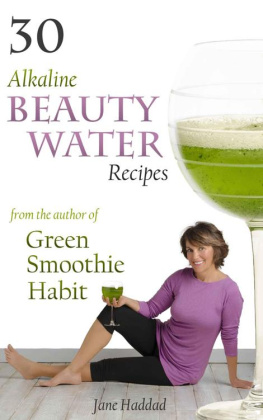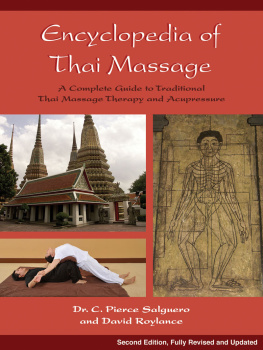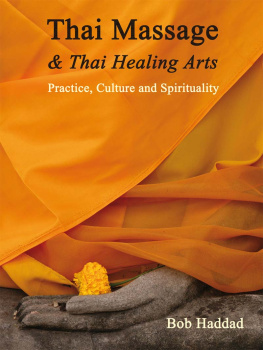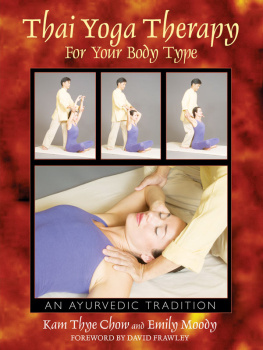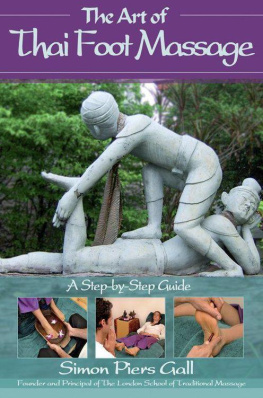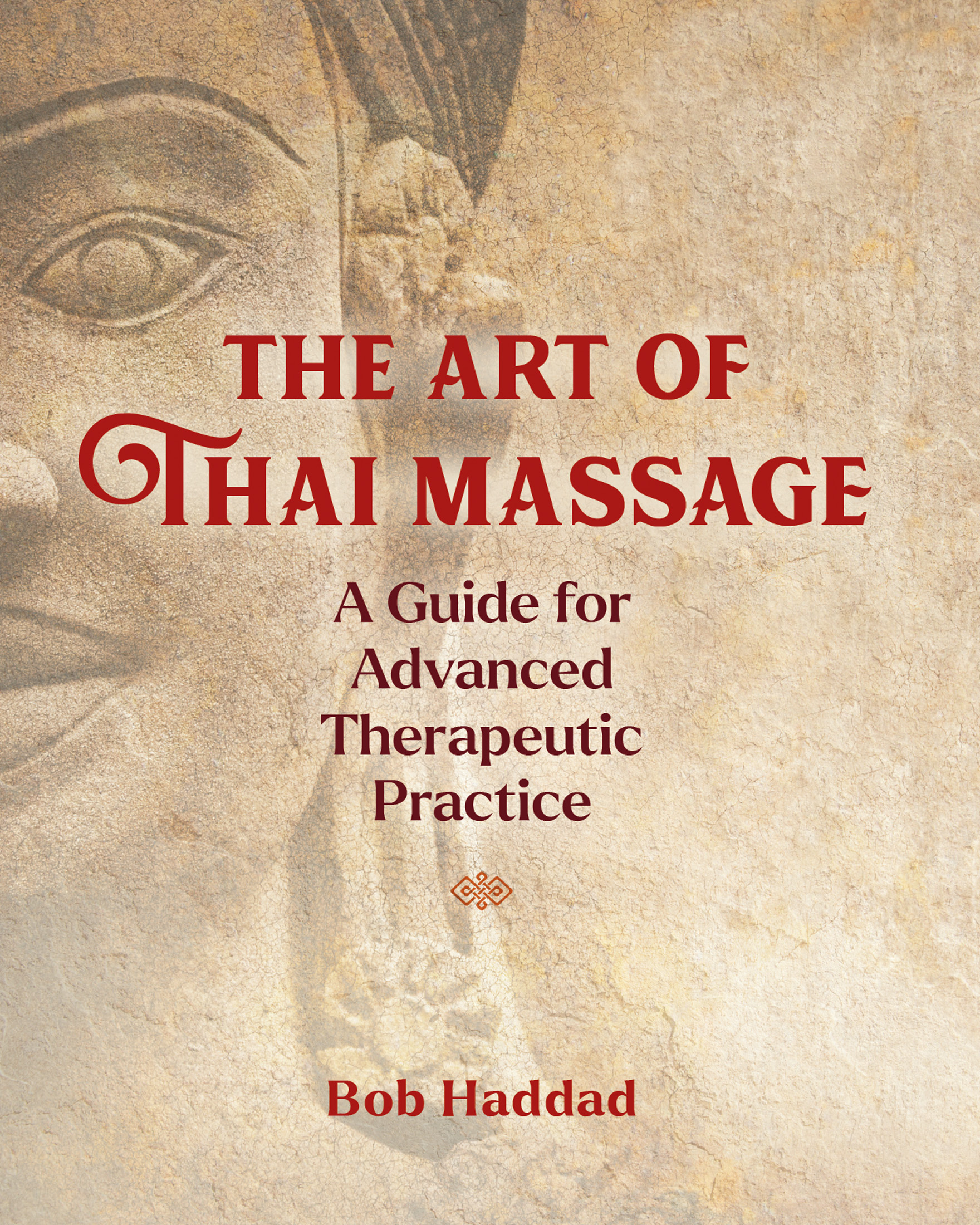
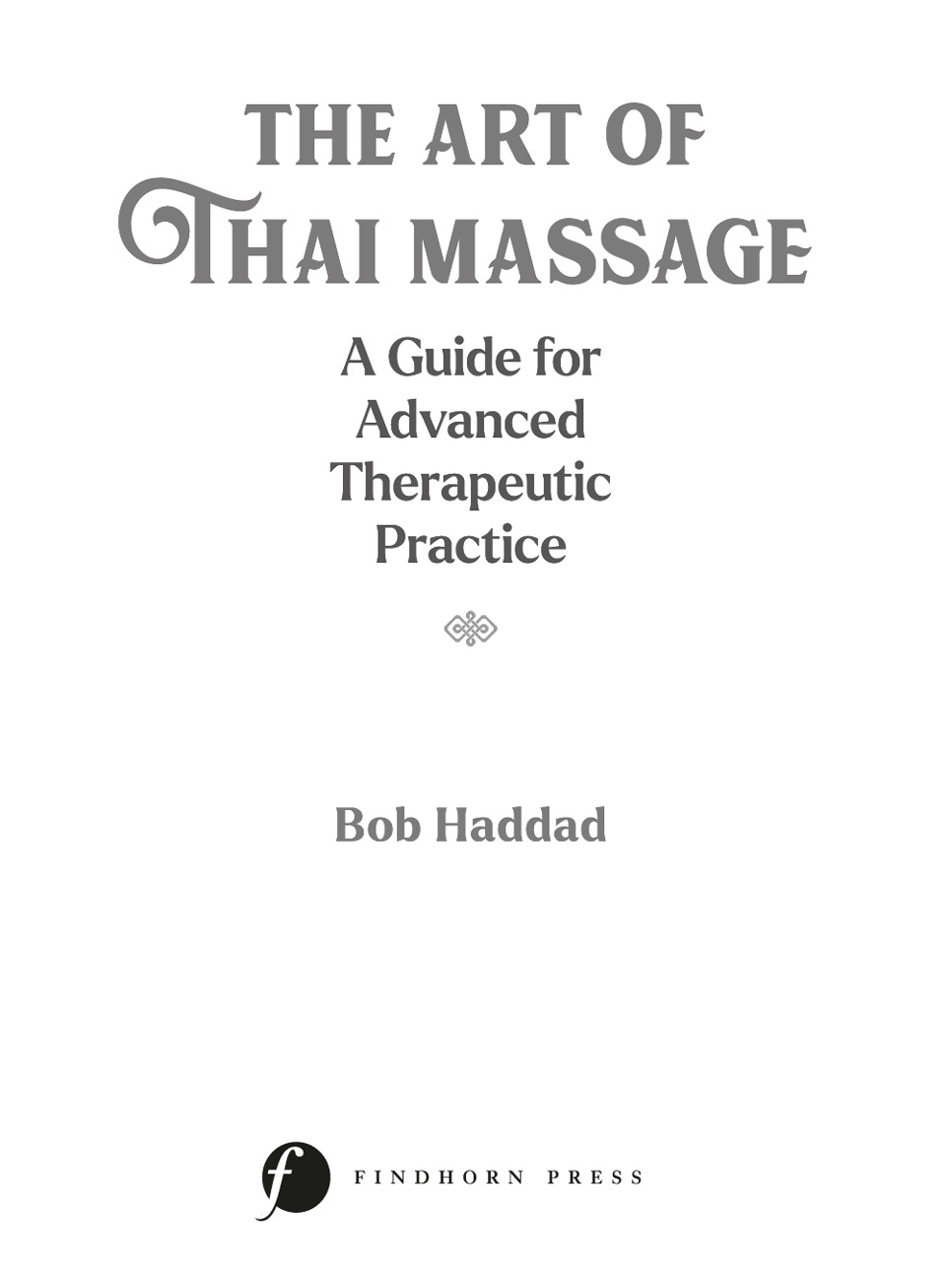
The Art of Thai Massage
This book is a distillation of the authors decades of dedication to traditional Thai massage, and it contains an enormous amount of experience and wisdom. Filled with engaging concepts and interesting research, The Art of Thai Massage expands our understanding of Thai massage and serves as a practical guide for all serious students and practitioners.
RALF MARZEN, director of the Mudita School of Thai Yoga Massage
Most books on Thai massage are manuals with photographs and descriptions of techniques and sequences. In contrast, this important book teaches us invisible components of effective therapy, such as pure intention, assessment, individualized treatment strategies, using intuition, and how to listen to and follow the flow of energy. Undoubtedly, this book will be read with equal joy by beginners as well as experienced practitioners.
DAVOR HABER, Thai massage instructor and author of Thai Yoga Masaa
This book is a must-read and an important contribution to the field of Thai healing arts. Bob Haddad brings clarity to the theories, principles, and practices of traditional Thai massage and presents a treasure trove of accurate and rarely discussed concepts. The book clears up misconceptions and brings greater focus and depth to the practice. I am delighted to share this work with my students.
REBECCA FARRAWAY, LMT, BCMT, founder and owner of Zion Massage College
The Art of Thai Massage offers a wealth of learning, knowledge, and practical experience to all practitioners of Thai massage. Bob Haddad clears away misunderstandings and illusions, brings a deep understanding of the tradition, and refines the application of techniques for practice. This book is a gift for our time.
HOWARD EVANS, author of A Myofascial Approach to Thai Massage
This detailed and expansive book emerges naturally from the authors many years of study, experience, and commitment. For advanced practitioners and for beginners, these pages offer important guidance and invaluable insights. I highly recommend it to all who love and practice the art of traditional Thai massage.
PAUL FOWLER, FMCHC, director of Blue Lotus Thai Healing Studies

Acknowledgments
To Pichest Boonthumme, a true mentor and a source of inspiration, knowledge, and guid- ance. I am grateful to have shared so many deep and meaningful experiences with him.
To Asokananda Harald Brust, who encouraged me at a formative time in my training, and who supported my efforts to bring people together through Thai Healing Alliance International.
To Jivaka, for his guidance and intercession, and to other spirit guides who have led me to a deeper understanding of extra-physical connectivity.
Thank you to those who consulted with me about some of the material presented in this book. To Tevijjo Yogi, who helped me through personal discussions and interviews; to Nephyr Jacobsen, for her feedback about Thai element theory; and to Homprang Chaleekanha, who shared her knowledge of Thai herbal medicine.
To my teachers Lek Chaiya Thiwong, Chongkol Setthakorn, Coocky Tassanee Boonsom, Sinchai Sukparset, and Pojanart Paenthai (Jack Chaiya) for their important work in Thai massage education over the years.
To many other teachers who showed me techniques and various approaches to working in traditional Thai massage.
To my clients, who have also been my teachers.
To my students and colleagues around the world, for their inspiration and encouragement.
To my colleagues and friends in Thailand, for their loving spirits, big smiles, and open hearts.
Thank you
Photos and Illustrations
Most photos were taken by Robert Agriopoulos, Bob Haddad, and Kathryn Kager. Rocking illustration by Bob Murray. Image modifications, arrows, and line placements by Bob Haddad. Other photos and illustrations from Shutterstock.com.
Photographs
Robert Agriopoulos: pages
Bob Haddad: pages
Kathryn Kager: pages
Shutterstock: pages
Illustrations
Bob Murray: page (bottom)
Shutterstock: pages
Bob Haddad: page
istockphoto.com: page
gograph.com: page (bottom)
Other sources
brainstuff.org, adapted by Bob Haddad: page
Guy Lombroso, courtesy Janice Gagnon: page
Courtesy Prabhat Menon: page
Courtesy Asokananda: page
Photo Models
Alexis Besosa, Marianne Blackburn, Pichest Boonthumme, Trinity Brown, Kim Calhoun, Taylor Ann Eldridge, Della French, Janice Gagnon, Bob Haddad, Sarah Honer, Kathryn Kager, Erin Kammerer, Renee Lisander, George Livanos, T.J. Martin, Prabhat Menon, Birgit Patty, Danielle Rainville, David Roma, Michael Savino, Sharon Slaughter, Caroline Smith, and Samak Suiseeya.
Contents



Introduction
Every new beginning comes from another beginnings end.
SENECA
I f you are reading these words, you must be attracted in some way to the wonderful world of traditional Thai massage. You may have heard about it through yoga, massage therapy, or another healing art, or you may be an excited student or a practicing therapist or teacher. Maybe, after many years of practice, youve been captivated so deeply that Thai massage has become an inseparable part of your identity. Wherever you are in this process, yours is a dance of pressure, stretching, and expansiveness; a world of movement, peace, and surrender; a journey of healing that is not limited to the physical body.
Thai massage has been helping people to improve their physical, mental, and spiritual health for a long time, but effective Thai therapy isnt based on fixed sequences of techniques that can be applied to everyone. After several years of continual study and practice, most therapists can develop the sensitivity and awareness that is needed to work with each person in a customized way. Serious students and therapists study with many different teachers throughout their entire lives. They listen attentively to the body of each person as they work; they learn to sense energy and to detect blockages and tension; and they rely on intuition, sensitivity, and stillness as guidelines for each treatment.
Evolution and tradition
Thai massage is an evolving healing art, with different styles and approaches, and the underlying traditional concepts and techniques are substantive and complete. Knowledge of other forms of bodywork may be helpful at times, but there is no need to impose or integrate techniques or beliefs from other Eastern or Western modalities into Thai massage.
Medicine, healing arts, and the principles governing Buddhism are all based on the goals of alleviating and preventing human suffering, and healing may be considered with an analogy similar to the principle of the Four Noble Truths: Recognize the condition; relieve its cause; aspire to a cure; and rely on the proper treatment. Thai massage is a physical application of the wisdom contained in traditional Thai medicine and Buddhist medicine; it is not a consequence of Ayurveda, Chinese medicine, or any other body of knowledge. Because of this, in order to reach full potential as a Thai massage therapist, its helpful to become familiar with the guiding principles of traditional Thai medicine and Thai element theory.
Next page

